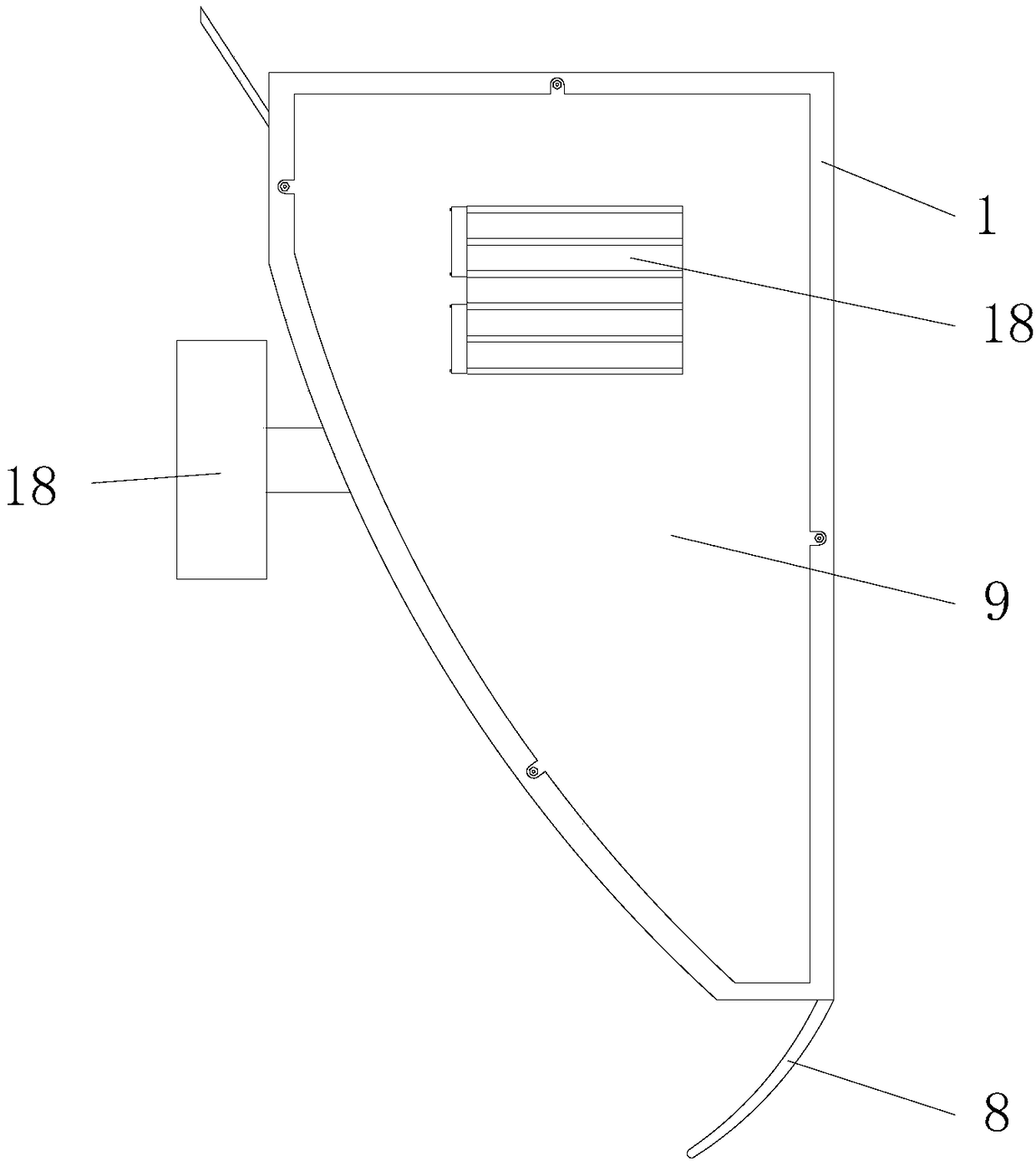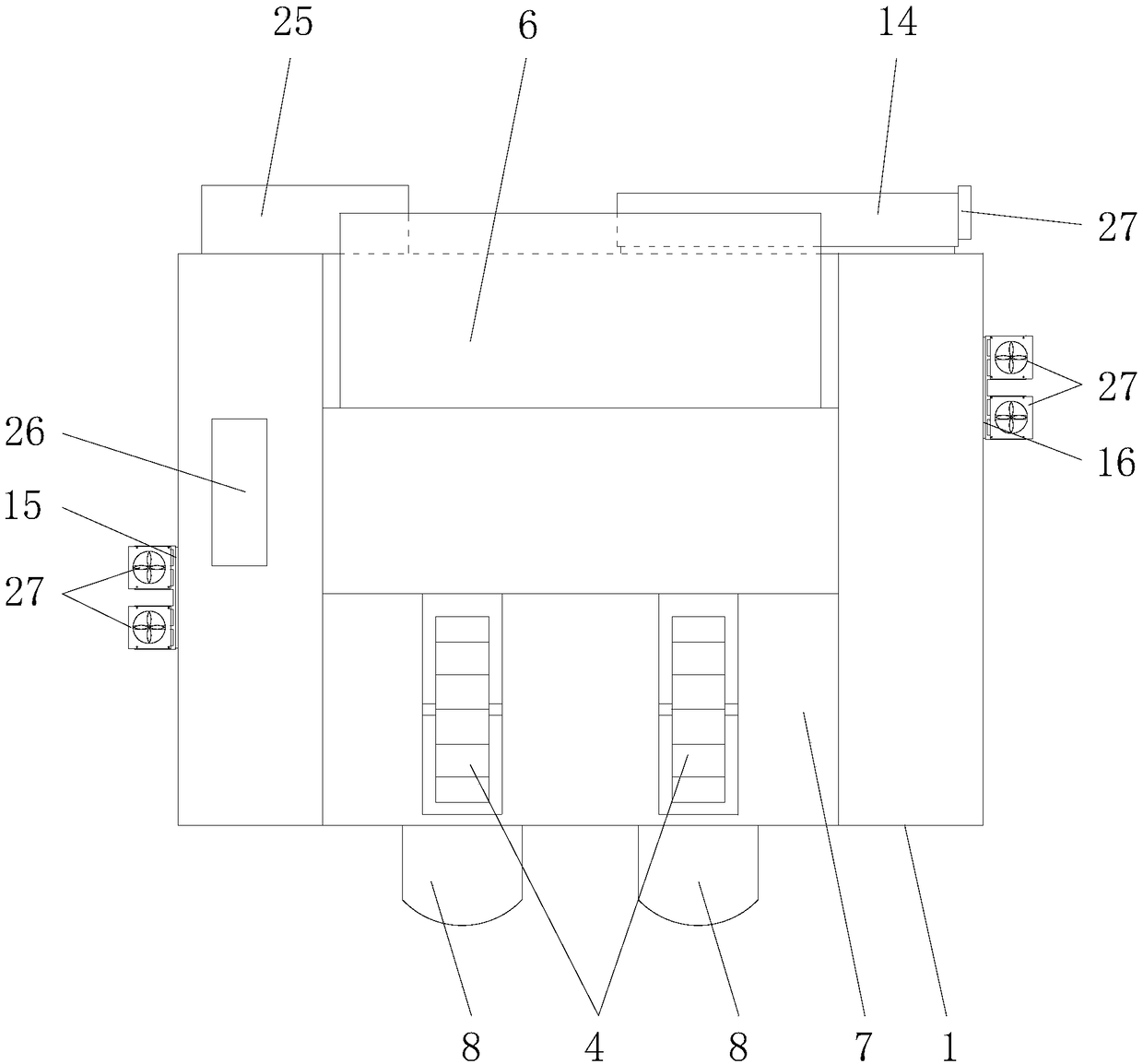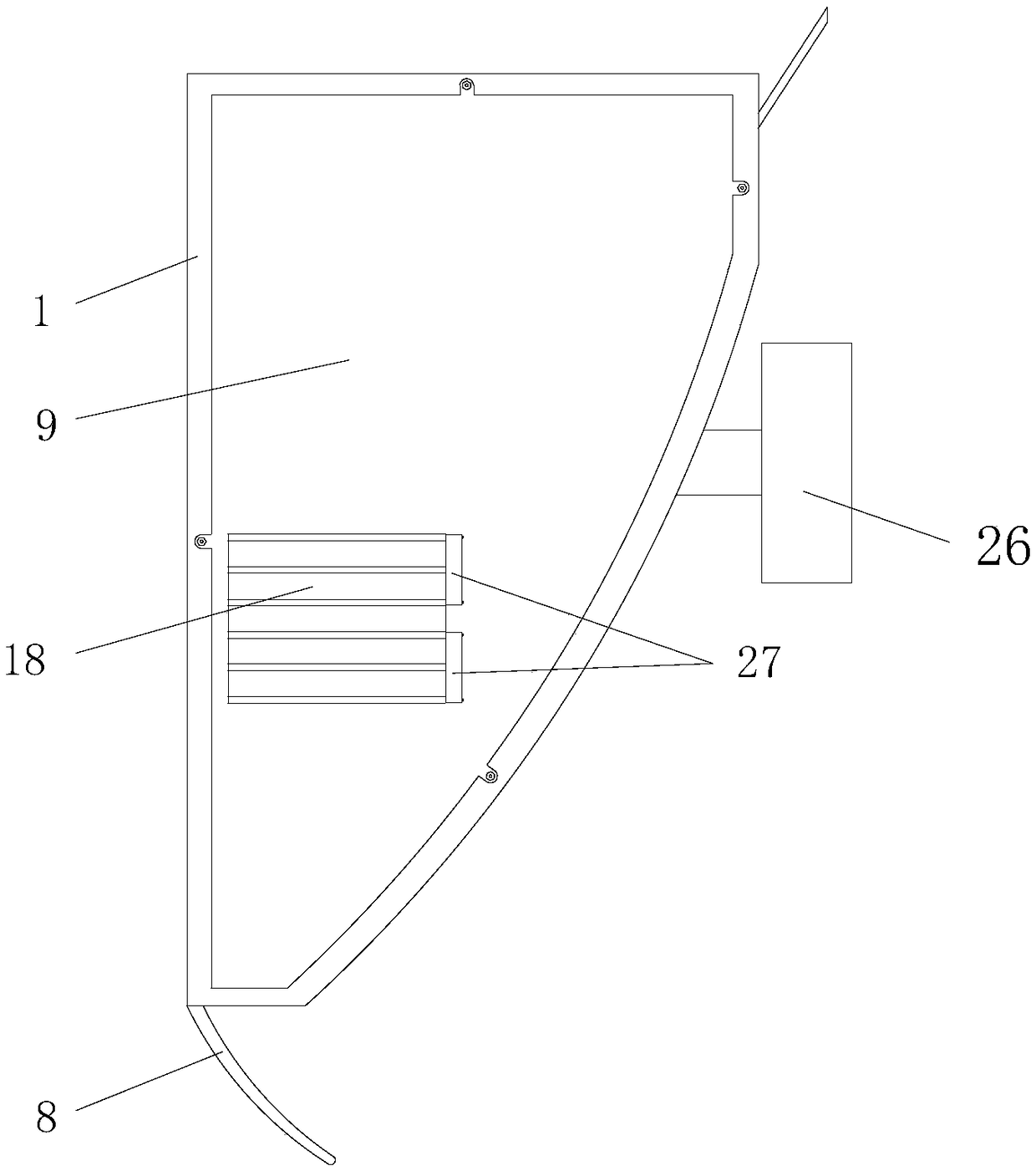Currency detector for finance
A banknote detector and financial technology, applied in banknote authenticity inspection, cooling/ventilation/heating modification, instrument and other directions, can solve the problems of sundries entering, affecting heat dissipation performance, affecting circuit boards, etc., to reduce burnout The probability of improving the heat dissipation performance and the effect of improving the safety level
- Summary
- Abstract
- Description
- Claims
- Application Information
AI Technical Summary
Problems solved by technology
Method used
Image
Examples
Embodiment Construction
[0037] Embodiments of the technical solutions of the present invention will be described in detail below in conjunction with the accompanying drawings. The following examples are only used to illustrate the technical solutions of the present invention more clearly, and therefore are only examples, rather than limiting the protection scope of the present invention.
[0038] It should be noted that, unless otherwise specified, the technical terms or scientific terms used in this application shall have the usual meanings understood by those skilled in the art to which the present invention belongs.
[0039] Such as figure 1As shown, the present embodiment provides a banknote detector for finance, including a housing 1, a first motor 2, a second motor 3, a banknote receiving wheel 4 and a drive wheel 5; the drive wheel 5 and banknote receiving The wheels 4 are respectively mounted on the upper opening 6 and the lower opening 7 of the housing 1, the first motor 2 and the second mo...
PUM
 Login to View More
Login to View More Abstract
Description
Claims
Application Information
 Login to View More
Login to View More - R&D
- Intellectual Property
- Life Sciences
- Materials
- Tech Scout
- Unparalleled Data Quality
- Higher Quality Content
- 60% Fewer Hallucinations
Browse by: Latest US Patents, China's latest patents, Technical Efficacy Thesaurus, Application Domain, Technology Topic, Popular Technical Reports.
© 2025 PatSnap. All rights reserved.Legal|Privacy policy|Modern Slavery Act Transparency Statement|Sitemap|About US| Contact US: help@patsnap.com



